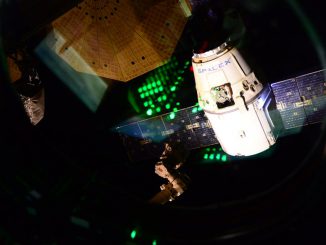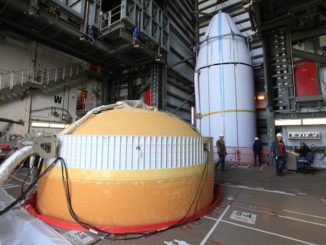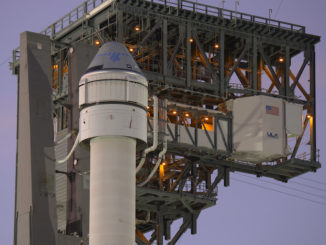The world’s most powerful operational rocket flashed to life at 2:30 a.m. EDT (0630 GMT) Tuesday and climbed into a moonlit summer sky from pad 39A at NASA’s Kennedy Space Center in Florida, the same site where the Apollo 11 astronauts left Earth for their historic moon landing nearly 50 years ago.
The Falcon Heavy lifted off powered by 27 Merlin main engines producing some 5.1 million pounds of thrust, nearly twice the liftoff power of any other operational launch vehicle. The Merlin engines burn a mixture of RP-1 kerosene and liquid oxygen propellants, and the Falcon Heavy weighed some 3.1 million pounds at the moment of launch.
Tuesday’s launch was the first nighttime liftoff of the Falcon Heavy, following daytime launches on Feb. 6, 2018, and on April 11 of this year. The mission carried two dozen satellites into orbit for the U.S. Air Force, NASA, NOAA, Taiwan and university teams.
The rocket’s two side boosters jettisoned two-and-a-half minutes into the mission, and used their engines to reverse course and return to nearly simultaneous landings at Cape Canaveral. The rockets’ boost-back burns are visible in the images below, appearing like a cosmic nebula in the night sky as the Falcon Heavy’s core stage continued downrange east from Florida’s Space Coast.
Read our full story for details on the mission.
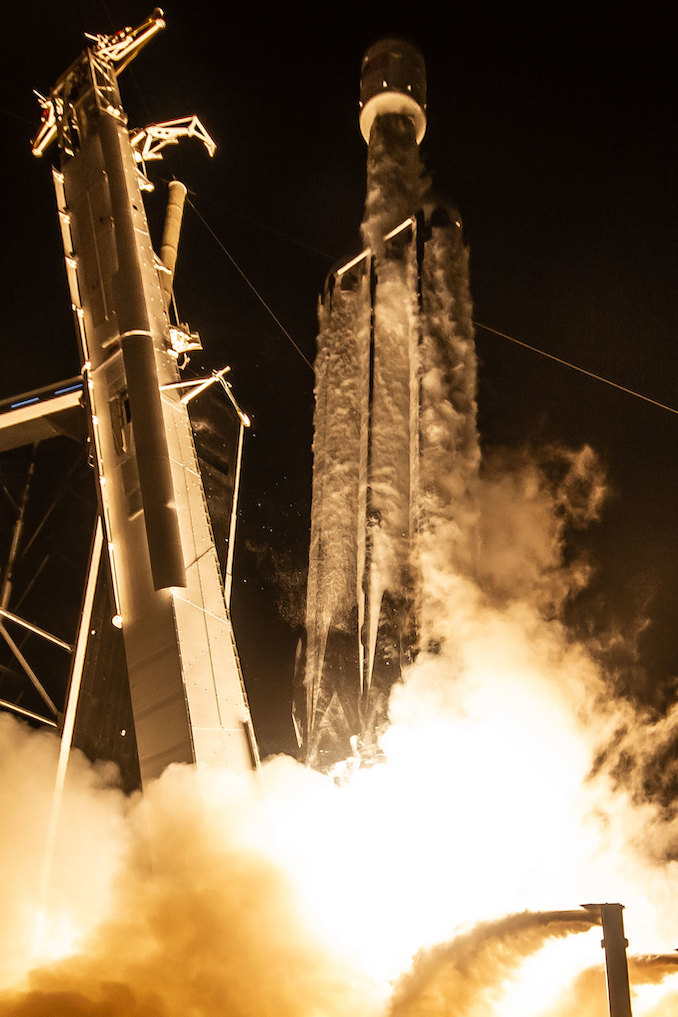
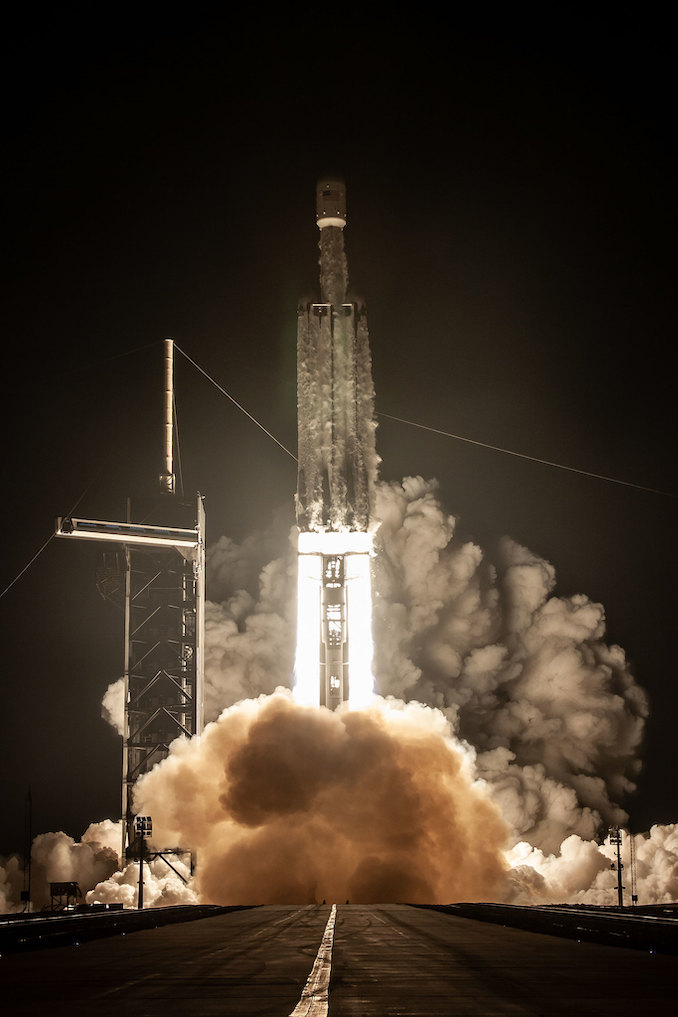
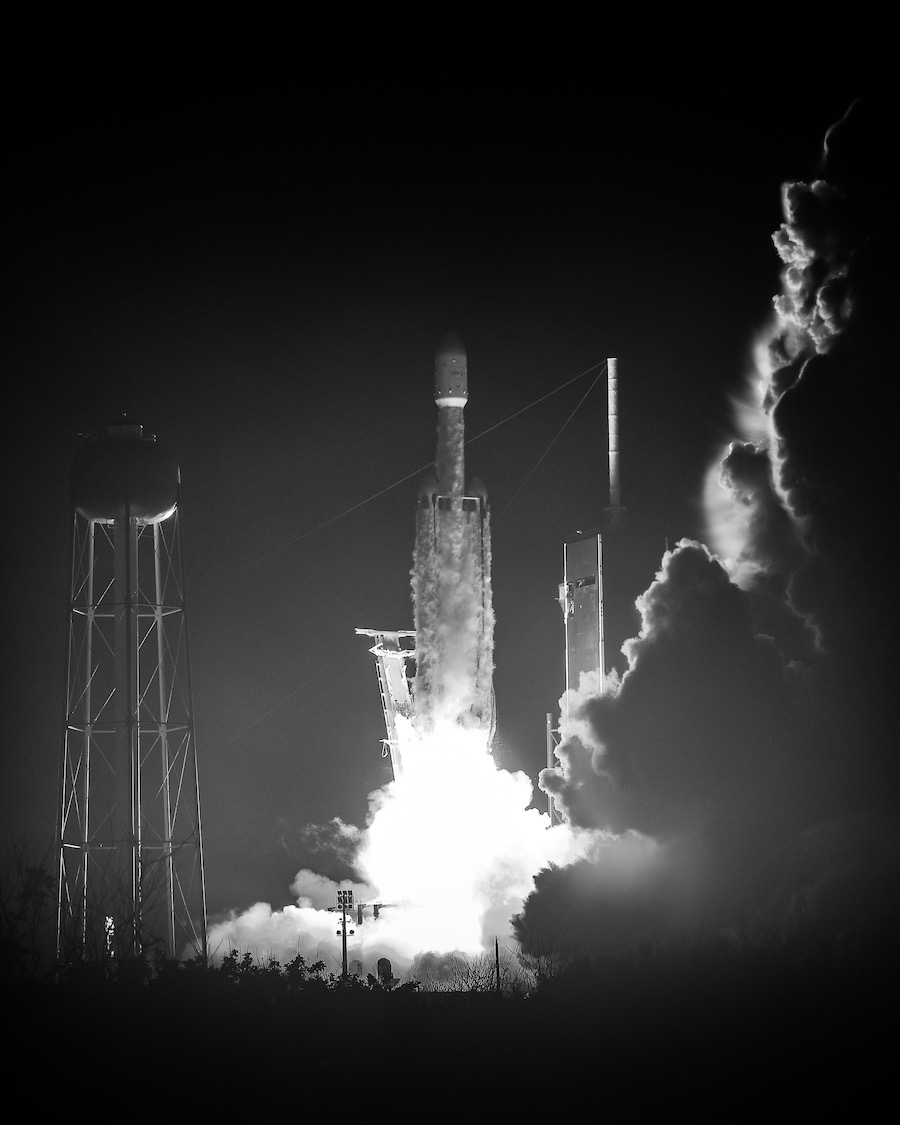
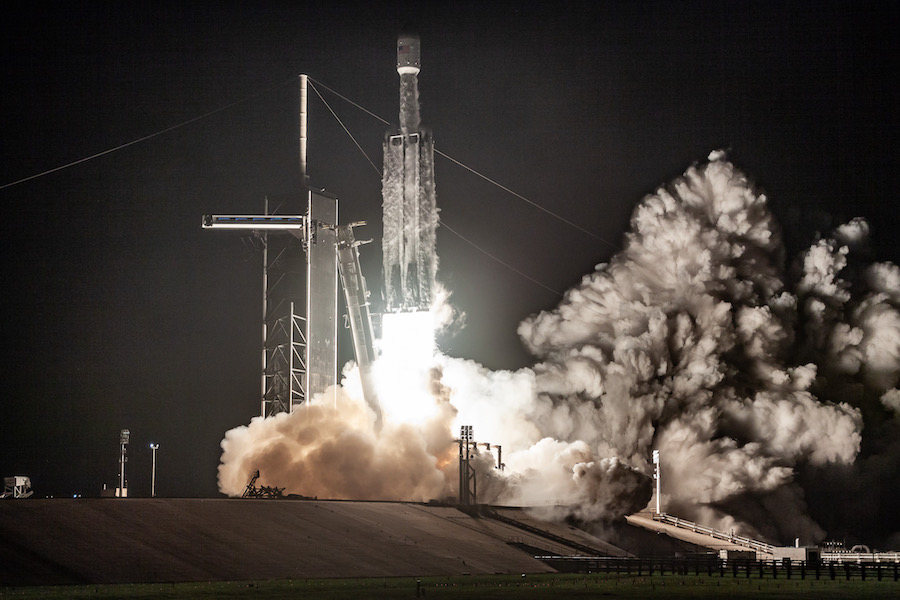
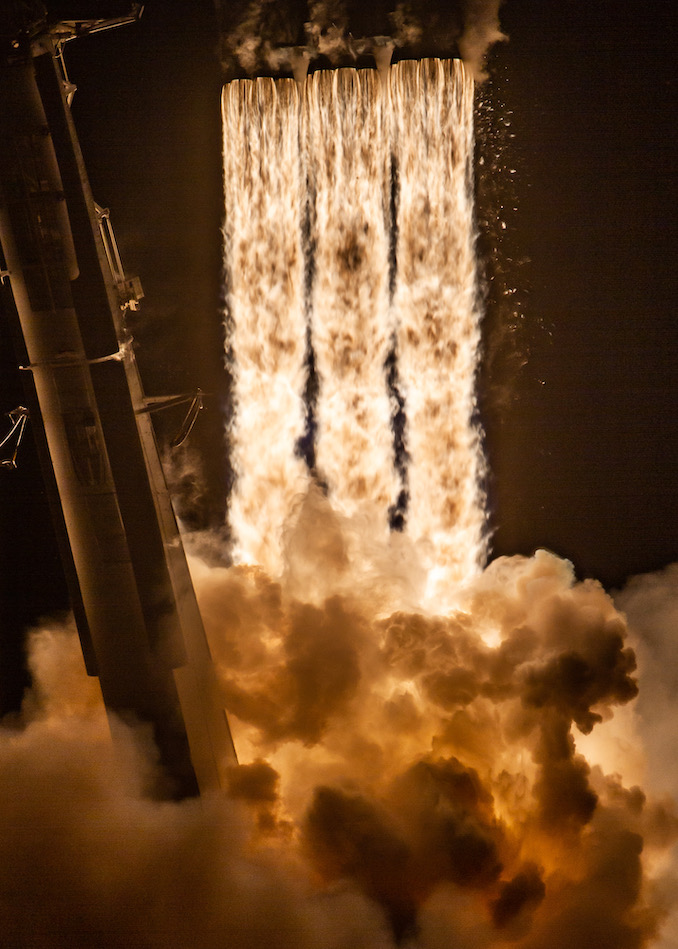
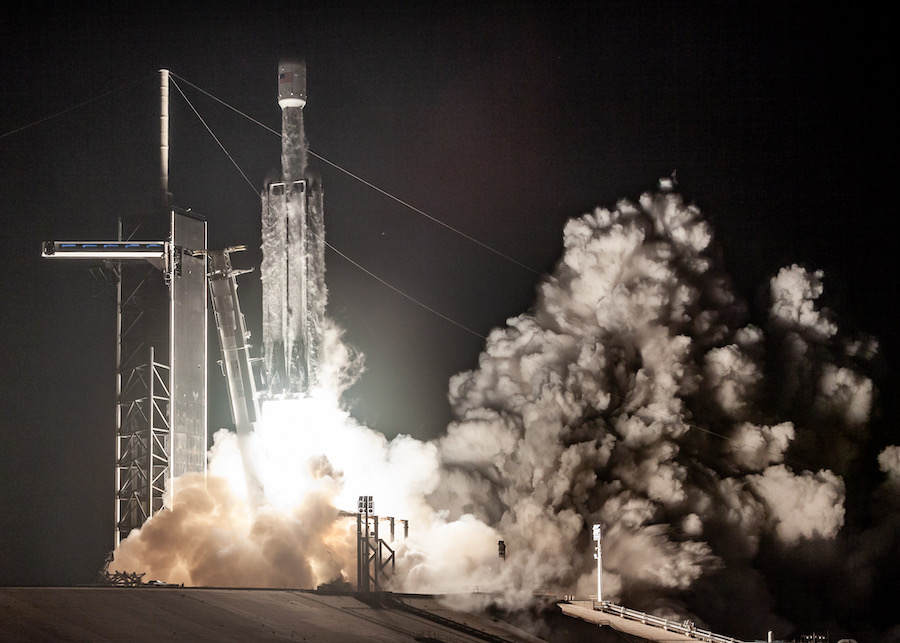
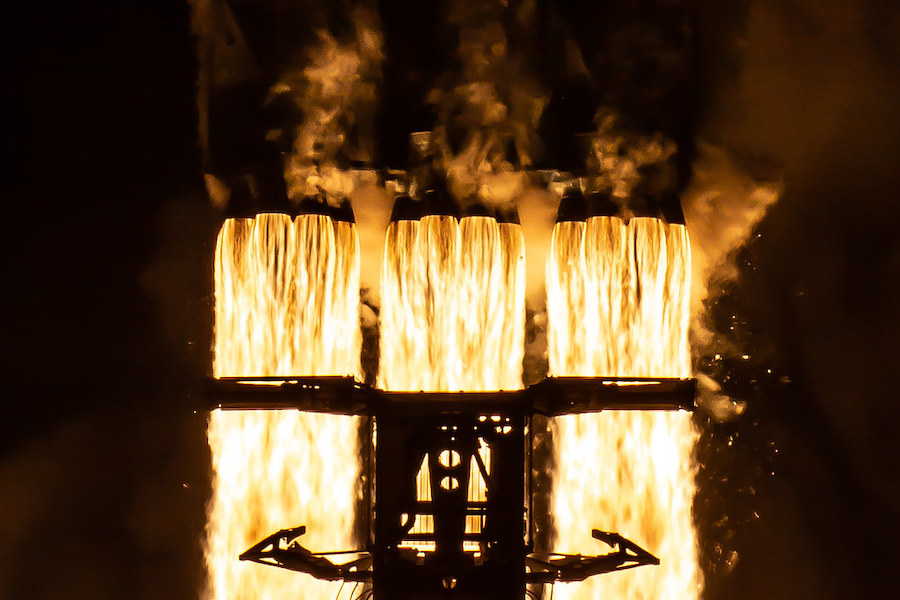
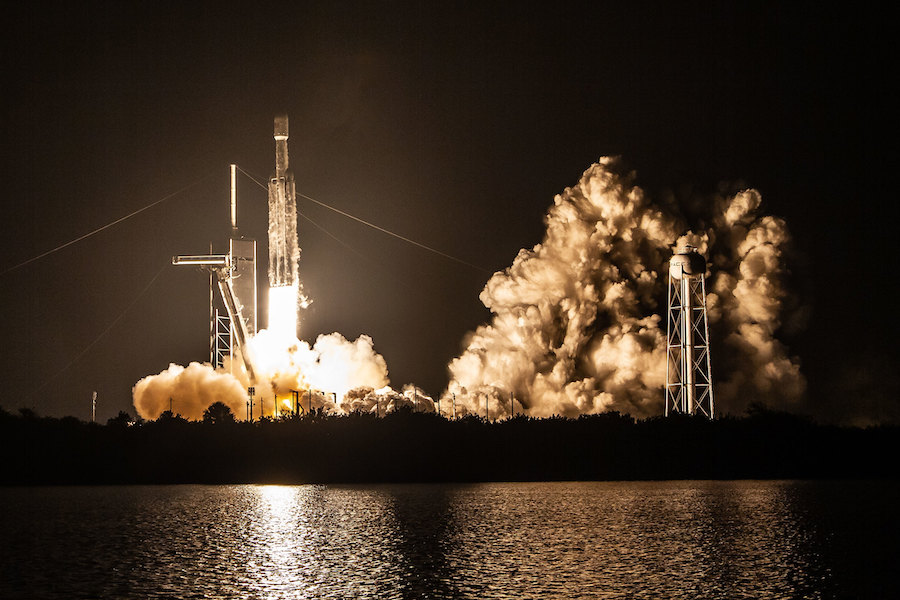
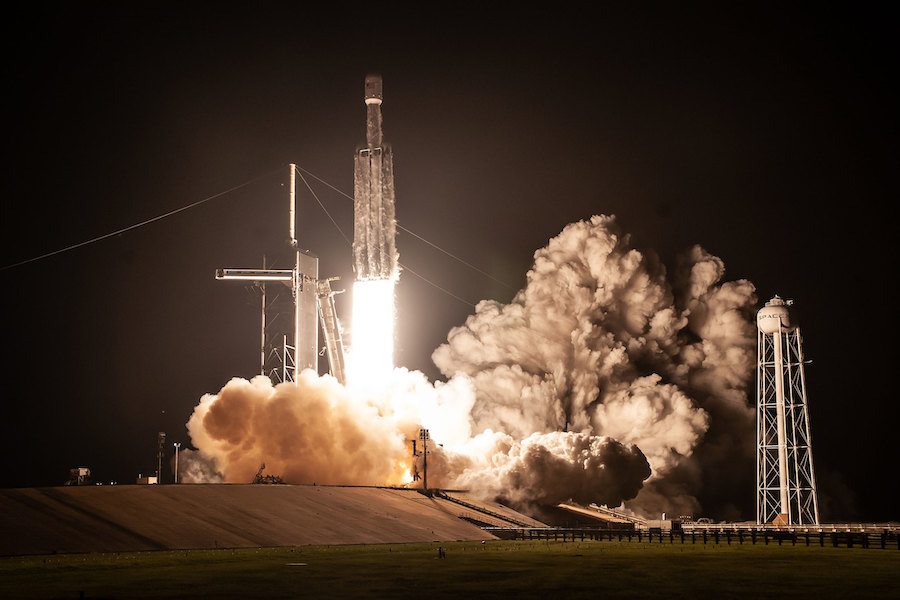
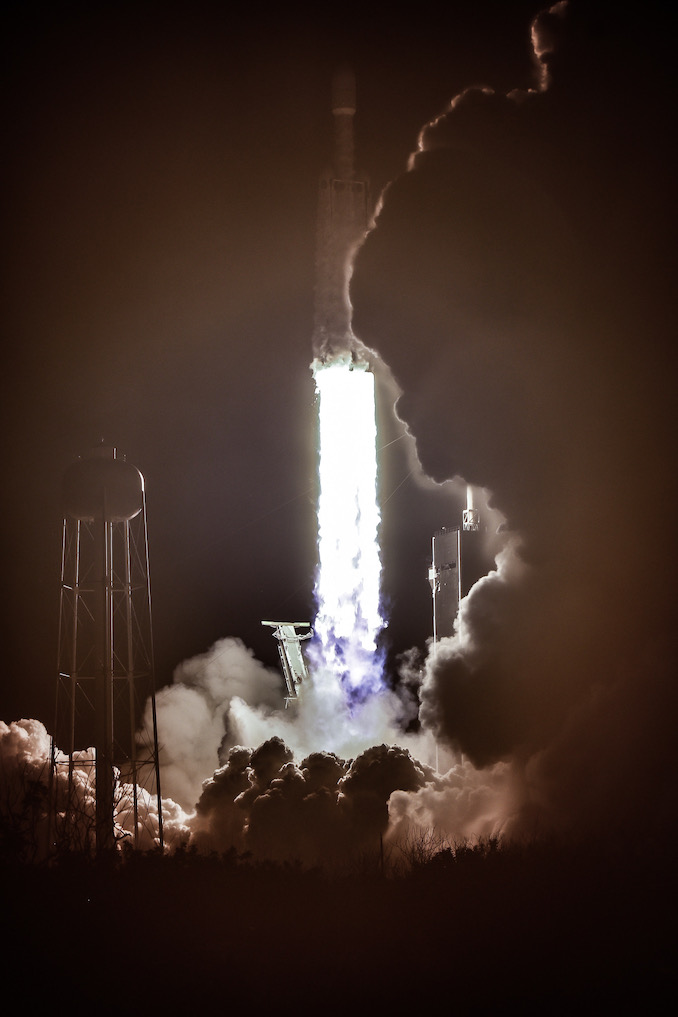
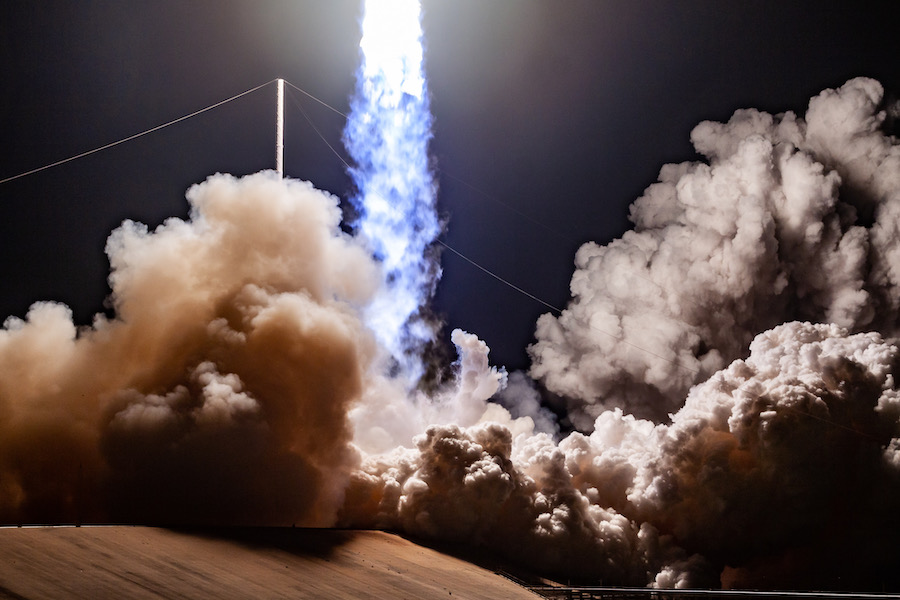
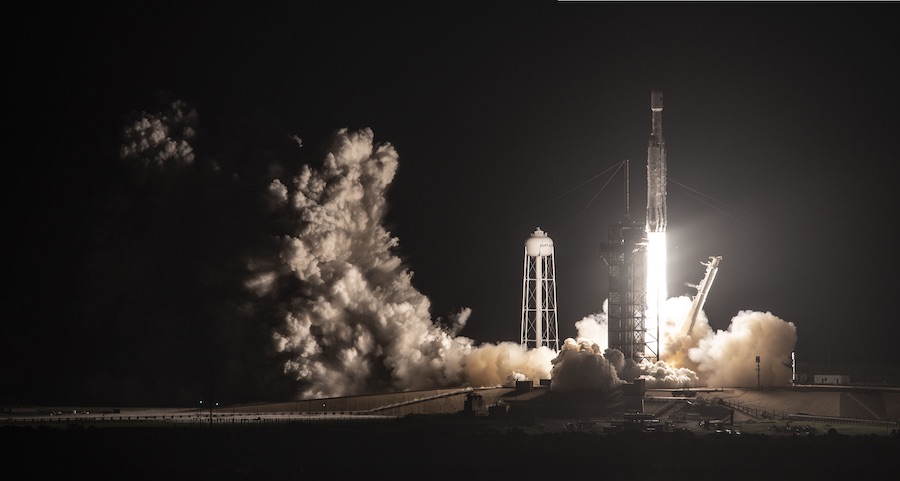
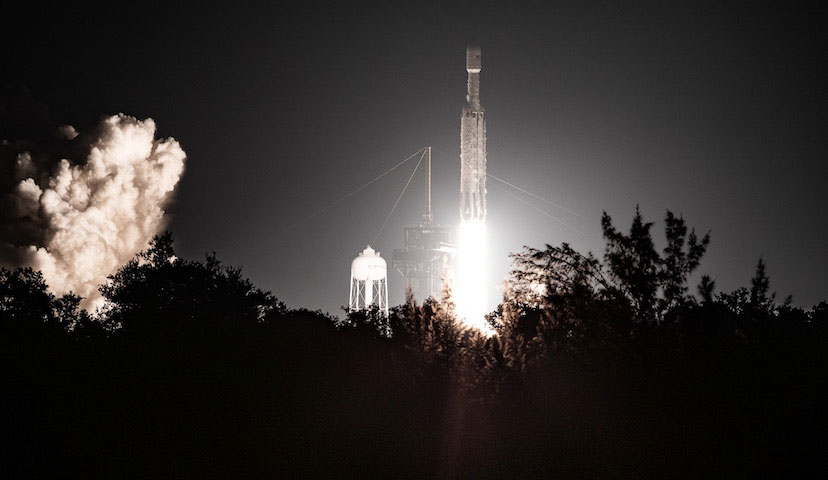
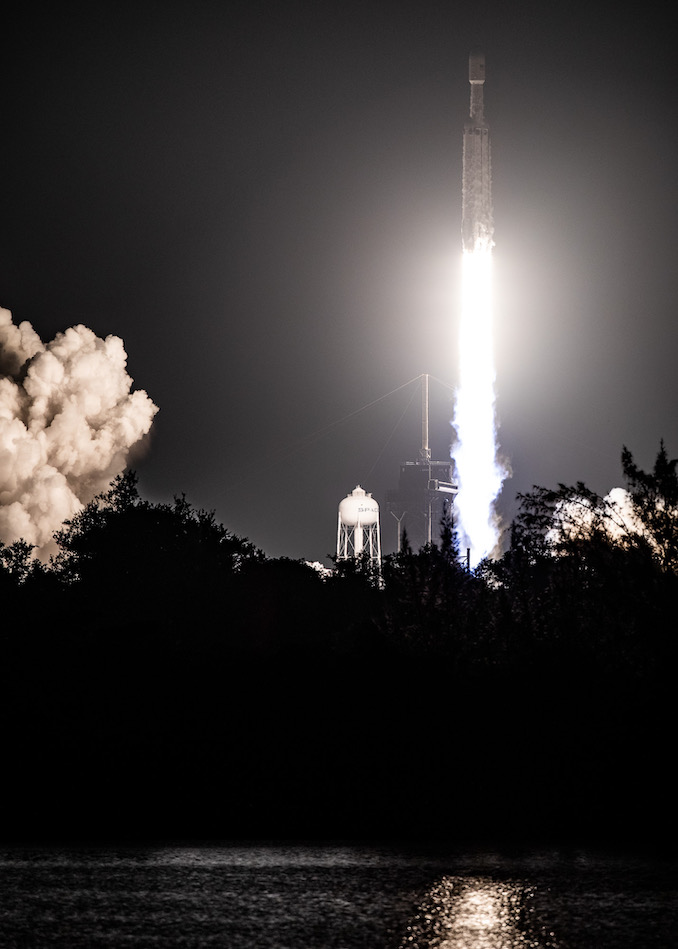
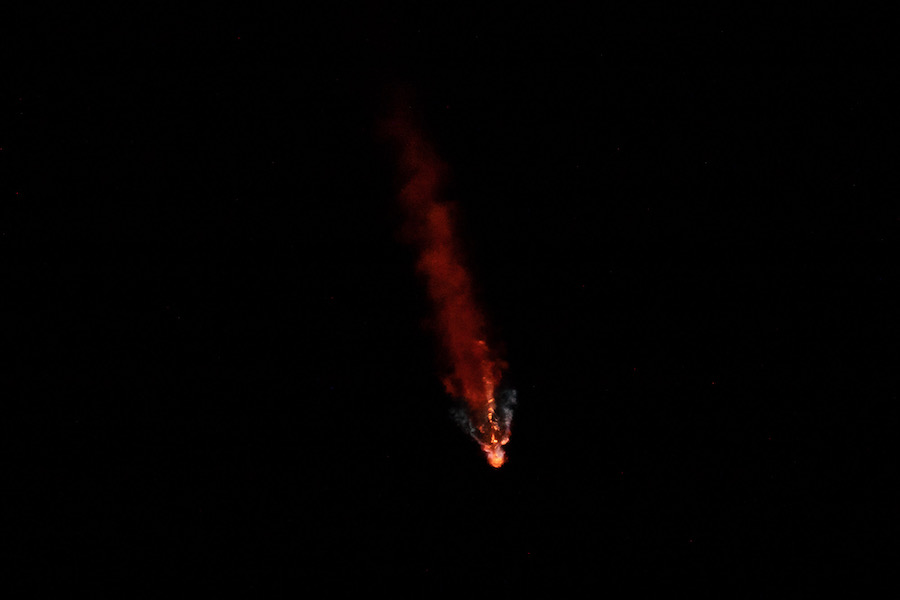
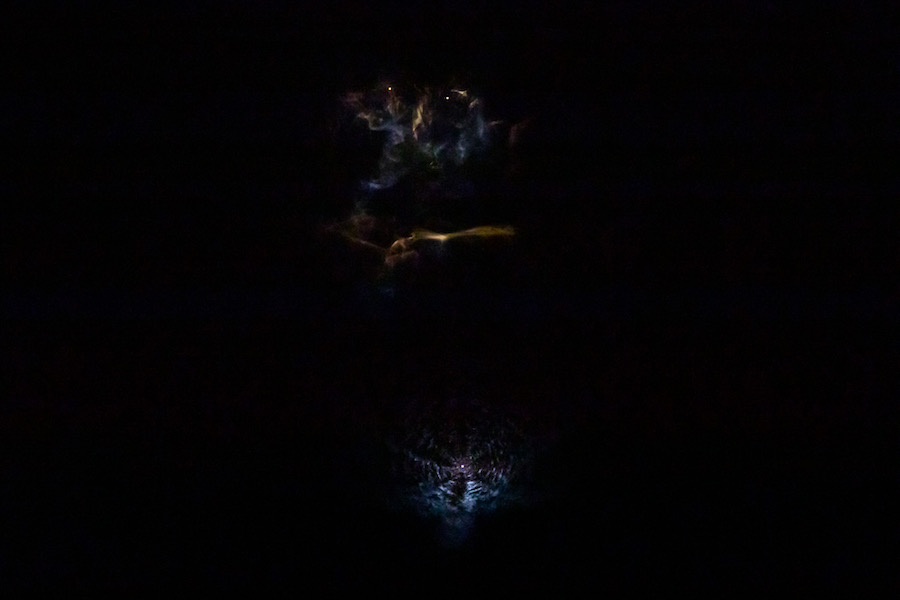
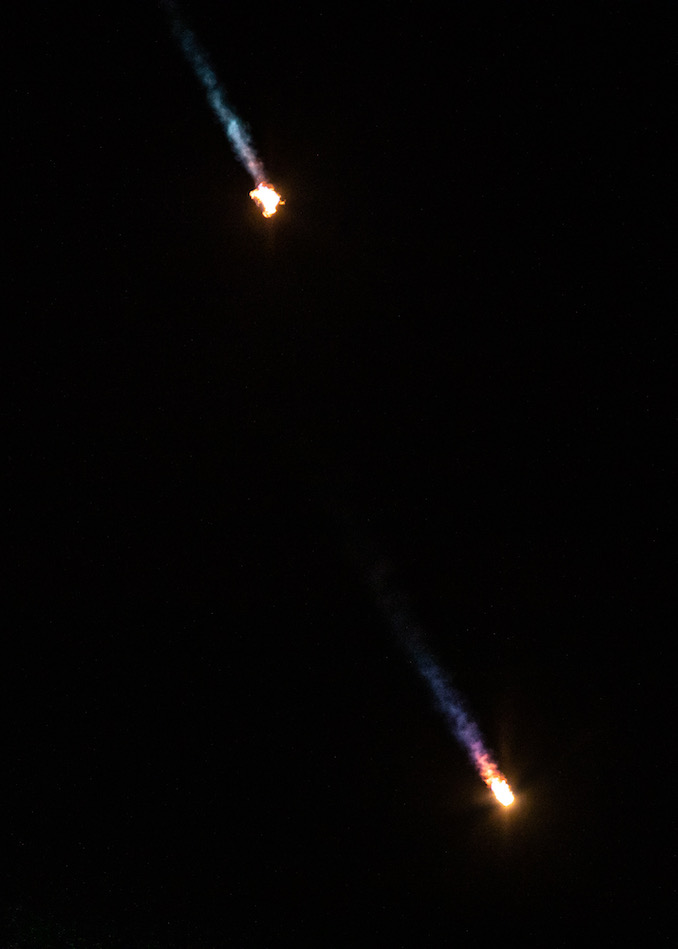
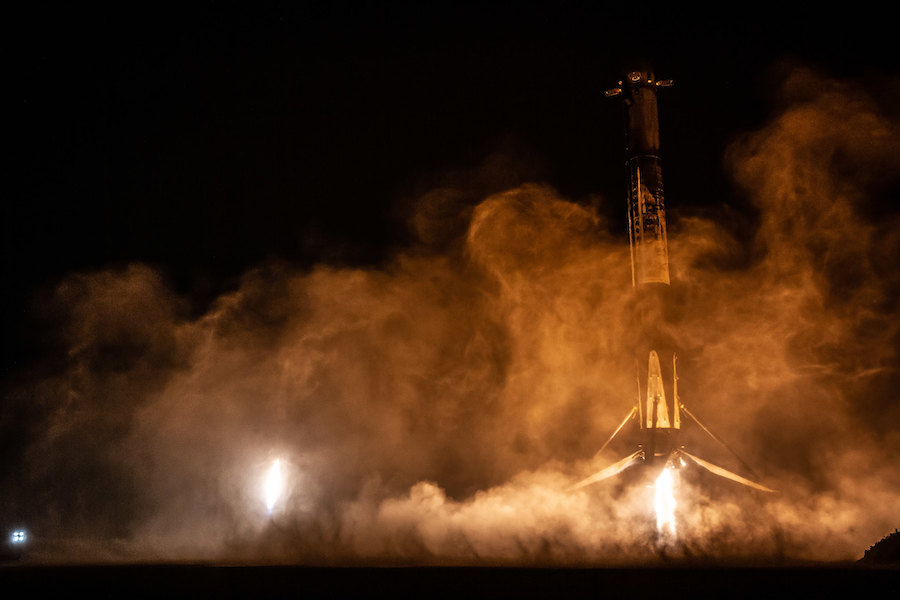
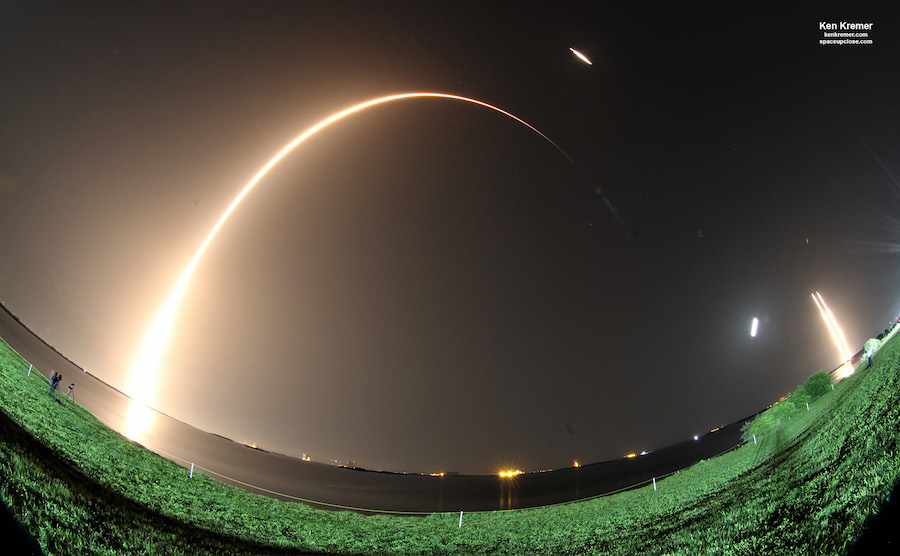
Email the author.
Follow Stephen Clark on Twitter: @StephenClark1.

